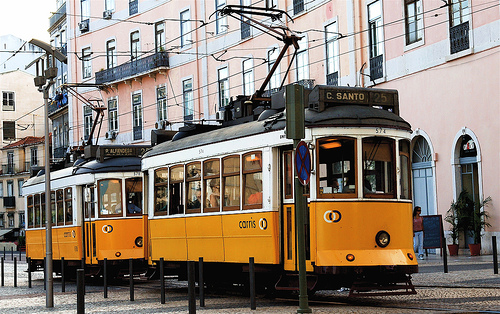 Argentina is the second largest country in South America, known for things like: tango, wine, BBQ, superb natural landscape, football and glaciers. Needles to say that there are many highlights of Argentina and even more reasons to visit the country.
Argentina is the second largest country in South America, known for things like: tango, wine, BBQ, superb natural landscape, football and glaciers. Needles to say that there are many highlights of Argentina and even more reasons to visit the country.
People travel to soak up new cultures, enjoy new traditions, visit museums, historical sites, learn to cook and for many other reasons. It’s definitely a good idea to invest in some tango lessons when you visit Argentina but don’t be shy and plan to see the glaciers as well.
Some people travel to see the world’s coolest train stations . If your bucket list includes buildings such as the Central station in Antwerp (Belgium), the Kuala Lumpur Railway Station in Malaysia and even St. Pancras/King’s Cross station in London, then make sure to also see Cascada de la Macarena station in Patagonia (Argentina).
It is located close to the “end of the world”, or 8 km from Ushuaia and is the final station on the world’s southernmost railway line. Once it served a prison, now it’s used only for tourism.
But regardless of why you travel, being comfortable on the road is the most important thing. After eleven hours in the train, somewhere in Central-Eastern Europe, I sure wished I had one of the best travel neck pillows . Those darn train seats were horrible and couldn’t close my eyes during the night. Likewise, if you fly and want to get some shut eye, the neck pillow is a gift sent from heaven.
 Central Lisbon is relatively compact and easy to navigate. Set on seven hills, the city streets are a mix of wide open lanes and narrower, steep cobblestone streets. With old tram cars rattling past modern buses, the transportation options are equally diverse. Here’s what you need to know about getting around in Lisbon.
Central Lisbon is relatively compact and easy to navigate. Set on seven hills, the city streets are a mix of wide open lanes and narrower, steep cobblestone streets. With old tram cars rattling past modern buses, the transportation options are equally diverse. Here’s what you need to know about getting around in Lisbon. Portugal doesn’t get nearly the recognition it deserves as a culinary and wine destination. In Western Europe, it’s often overlooked for Spain, Italy, and France. But what many people don’t realize is that wine-lovers – especially those on a smaller budget – should be flocking here in droves. Portugal is one of the
Portugal doesn’t get nearly the recognition it deserves as a culinary and wine destination. In Western Europe, it’s often overlooked for Spain, Italy, and France. But what many people don’t realize is that wine-lovers – especially those on a smaller budget – should be flocking here in droves. Portugal is one of the  One of the biggest draws for visitors to England is the living history found throughout the country. From the mysterious pillars of Stonehenge to the famous hands of Big Ben, the sights of England are those right out of our history books. When it comes to World War II, England offers even more for the history buff.
One of the biggest draws for visitors to England is the living history found throughout the country. From the mysterious pillars of Stonehenge to the famous hands of Big Ben, the sights of England are those right out of our history books. When it comes to World War II, England offers even more for the history buff. Whether or not you love everything about L.A. and southern California, you probably love the weather during most of the year. There aren’t many places in the United States where you can plan an outdoor music festival during mid-April and count on nice weather. With the case of the
Whether or not you love everything about L.A. and southern California, you probably love the weather during most of the year. There aren’t many places in the United States where you can plan an outdoor music festival during mid-April and count on nice weather. With the case of the  When I go outside and feel the wind on my face I cannot help but think of warmer destinations where I could just wait until winter is over in my own city. This winter has been mocking us from day one and it doesn’t seem to want to end either… so why not plan a city break to a warmer European country?
When I go outside and feel the wind on my face I cannot help but think of warmer destinations where I could just wait until winter is over in my own city. This winter has been mocking us from day one and it doesn’t seem to want to end either… so why not plan a city break to a warmer European country? Who among those of us who love to travel hasn’t fallen so in love with one place or another during a trip, so much so that you’d consider
Who among those of us who love to travel hasn’t fallen so in love with one place or another during a trip, so much so that you’d consider  When it comes to accommodation choices – especially in a big city where camping might not be an option – you’re generally limited as to the type of place you stay. Sure, you can choose between a hotel, hostel, B&B, apartment, guesthouse or inn, but really these are all just variations on a theme – a building with multiple compartmentalized rooms that offer a bed, a bathroom, and if you’re lucky, access to common room and kitchen.
When it comes to accommodation choices – especially in a big city where camping might not be an option – you’re generally limited as to the type of place you stay. Sure, you can choose between a hotel, hostel, B&B, apartment, guesthouse or inn, but really these are all just variations on a theme – a building with multiple compartmentalized rooms that offer a bed, a bathroom, and if you’re lucky, access to common room and kitchen.